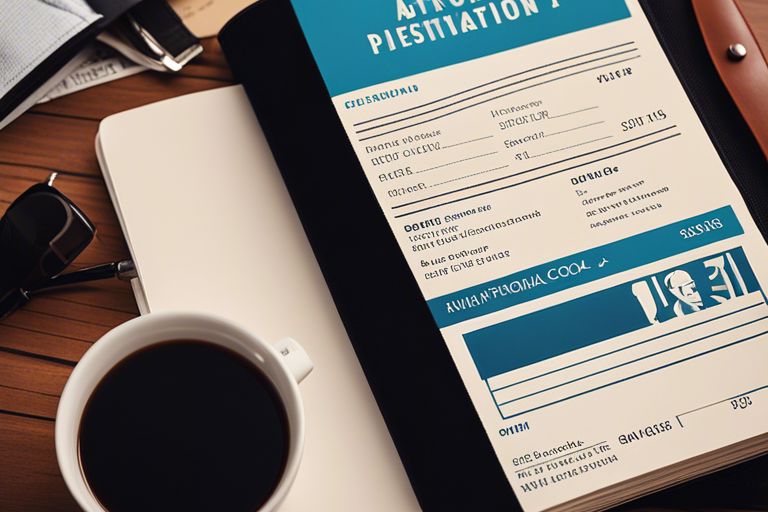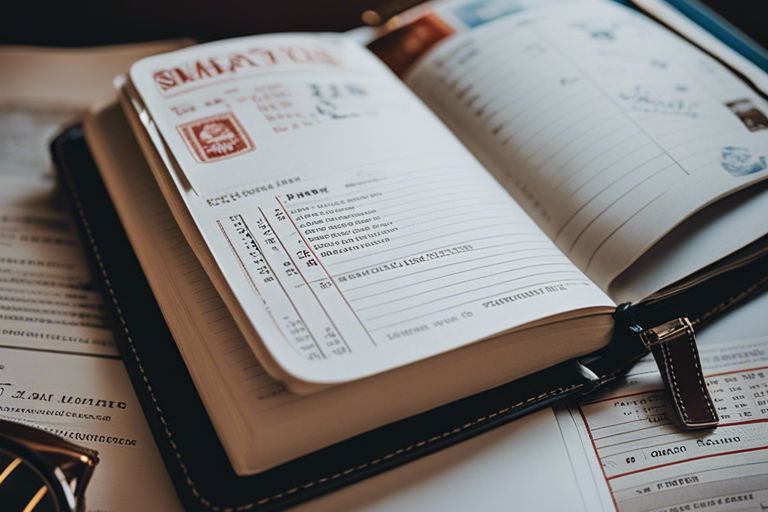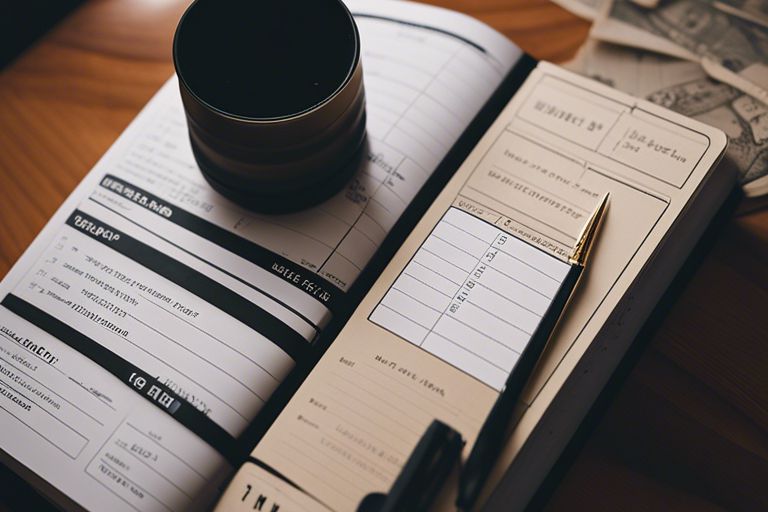Table of Contents
Have you ever looked at your boarding pass and wondered what those two or three-letter combinations next to the airline name stand for? Well, those are the airline codes, and they play a crucial role in the aviation industry. These codes are assigned by the International Air Transport Association (IATA) and are used to identify airlines for various purposes such as ticketing, reservations, and flight operations. Understanding these codes can be beneficial for every traveler, as it can help you find the right airline and ensure a smoother journey. In this blog post, we will explore the significance of airline codes and how they are used in the air travel industry.
Key Takeaways:
- Airline codes are a series of two to three letters assigned to each airline for identification purposes.
- These codes are used in flight schedules, ticketing, baggage handling, and other airline operations.
- The IATA code is a two-letter code assigned by the International Air Transport Association, while the ICAO code is a three-letter code assigned by the International Civil Aviation Organization.
- Airline codes are essential for travelers to identify airlines and for the aviation industry to maintain consistent and efficient operations.
- Understanding these airline codes can help travelers navigate the complexities of air travel and make informed decisions when booking flights.
Airline Code Types
Even though airline codes may seem random to you, they are actually standardized and serve specific purposes. There are various types of airline codes that are used in the airline industry:
- IATA airline codes – These are two-letter codes assigned by the International Air Transport Association (IATA) to identify airlines.
- ICAO airline codes – These are four-letter codes assigned by the International Civil Aviation Organization (ICAO) to identify individual aircraft, as well as the airline operating the flight.
This allows airlines and airports to be uniquely identified and easily recognized on a global scale. You can access a comprehensive list of Airline and Airport Codes Search on the IATA website.
IATA Airline Codes
When you book a flight, you may notice a two-letter code printed on your ticket. This is the IATA airline code, which uniquely identifies the airline operating your flight. For example, “LH” represents Lufthansa, and “DL” represents Delta Air Lines. These codes are used in reservations, timetables, tickets, tariffs, and more, making it easier for you to identify the airline you are flying with.
ICAO Airline Codes
ICAO airline codes are mainly used for air traffic control and airline operations. These four-letter codes are crucial for international flight operations and are displayed on flight plans, air traffic control, and aircraft livery. For example, “AAL” represents American Airlines, and “BAW” represents British Airways. When you see these codes, you can easily recognize the airline and the aircraft on your radar or in the sky.
Importance of Airline Codes in the Aviation Industry
Some people may not realize the crucial role that airline codes play in the aviation industry. These unique, three-letter codes assigned to each airline are not just random combinations of letters; they are a vital component of the aviation system that helps ensure smooth and efficient operations. Without these codes, the aviation industry would face significant challenges in various aspects of its operations.
Airline Identification
When you see an airline code displayed on your boarding pass or on the departure board at the airport, it allows you to quickly and easily identify the airline you will be flying with. This not only helps you locate the correct check-in counter and departure gate, but it also enables airline staff and air traffic controllers to recognize and track specific airlines within the busy airspace. The use of unique airline codes enhances safety and security by ensuring that the correct airline and its corresponding flight information are accurately communicated and tracked throughout the entire journey.
Simplification of Communication and Operations
Another significant reason for the importance of airline codes is the simplification of communication and operations within the aviation industry. Using these codes, communication between pilots, air traffic controllers, ground handling staff, and other aviation professionals becomes much more efficient and streamlined. When every airline has its own distinct code, it eliminates the confusion that could arise from similar-sounding or similarly named airlines. Additionally, airline codes simplify the process of managing flight schedules, reservations, and ticketing, ensuring that your travel experience is well-coordinated and hassle-free.

Decoding Airline Codes
Not everyone knows what those three-letter codes on the boarding passes represent, but they are crucial for identifying airlines and simplifying communication between industry professionals. It’s essential to understand how these codes work and what they mean for your travel experience.
Structure of IATA Codes
The International Air Transport Association (IATA) assigns two-letter codes to airlines which are used for reservations, ticketing, and other communications. These codes are based on the name of the airline or its lineage and are widely recognized and used globally. For example, the code “AA” stands for American Airlines, while “BA” is used for British Airways. This simplified system helps streamline the air travel process, making it easier for you to identify your airline while booking flights and during your journey.
Structure of ICAO Codes
The International Civil Aviation Organization (ICAO) assigns four-letter codes to airlines to standardize the process of identifying carriers. These codes are primarily used for international flight plans and air traffic control. Unlike IATA codes, ICAO codes are not based on the name of the airline and require a deeper understanding of the aviation industry to decipher. However, they are crucial for ensuring safe and efficient air travel. For instance, the ICAO code “DAL” corresponds to Delta Air Lines. Understanding the structure and significance of ICAO codes can provide you with a deeper insight into the aviation world, enhancing your overall travel experience.
By understanding the structure and purpose of both IATA and ICAO airline codes, you can navigate the aviation industry with ease and confidence. These codes play a vital role in ensuring the efficiency, safety, and seamlessness of air travel, and by being aware of their significance, you can make informed decisions and enjoy a more enriching travel experience.

Usage of Airline Codes
Now that you know what airline codes are, let’s delve into how they are used in the aviation industry.
Commercial Purposes
For commercial purposes, airline codes play a crucial role in the booking and ticketing process. When you book a flight, you may not realize it, but the airline code is what identifies the airline you are flying with. This code is then used throughout the reservation and ticketing system, making it easier for you to identify which airline you are flying with and ensuring that your information is accurately recorded. Additionally, airline codes are used in marketing and advertising materials, helping airlines establish their brand identity and presence in the market.
Air Traffic Control and Safety
When it comes to air traffic control and safety, airline codes are essential for clear and efficient communication. Air traffic controllers and pilots use these codes to identify specific airlines and flights, especially in busy airspace. By using these codes, they can quickly and accurately communicate important information such as flight paths, altitudes, and any potential issues. This ensures that your flight can proceed safely and efficiently, with accurate and timely information being communicated to those responsible for ensuring your safety in the air.
Conclusion
With these considerations, you now have a better understanding of what airline codes are and why they are important. Whether you’re a frequent traveler or simply curious about the codes you see on your boarding pass, knowing the significance of these two to three-letter combinations can enhance your travel experience. Not only do airline codes provide a quick and efficient way to identify airlines and airports, but they also play a crucial role in the smooth operation of the airline industry. So next time you see a code like “AA” or “JFK,” you’ll have a deeper appreciation for the integral role these codes play in the world of aviation.
FAQ
Q: What are airline codes?
A: Airline codes are a unique two or three-letter code that identifies a specific airline. These codes are used in flight schedules, tickets, reservations, and when tracking freight and baggage. Airlines use codes to streamline communication and identify their brand in a standardized format.
Q: Why are airline codes important?
A: Airline codes are important for several reasons. They allow for easier and faster communication between airlines, airports, and travel agencies. They also help to avoid confusion between airlines with similar sounding names. Additionally, airline codes are vital for flight tracking, airport operations, and identifying airlines on tickets and boarding passes.
Q: How are airline codes assigned?
A: Airline codes are assigned by the International Air Transport Association (IATA). These codes are unique and standardized to ensure global recognition. The assignment process involves the IATA working closely with airlines to select codes that are not already in use or easily confused with existing codes. The goal is to create a system that simplifies air travel logistics and enhances safety and efficiency.

